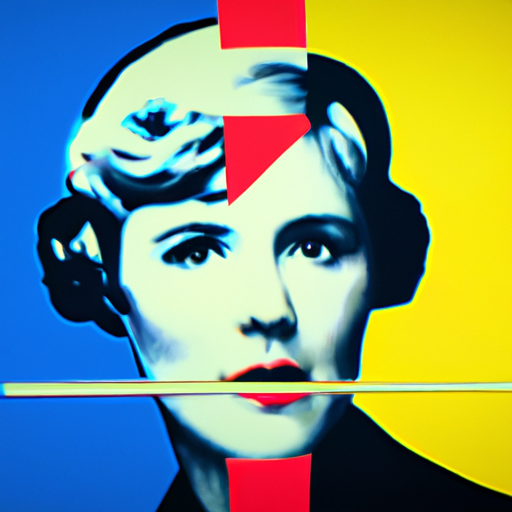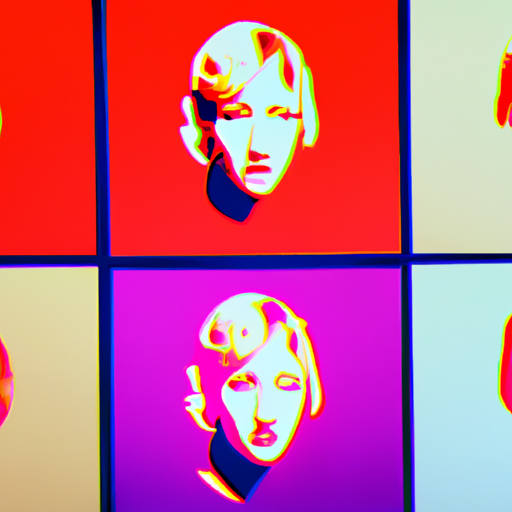
-
Table of Contents
The Intersection of Music and Visual Illustration

Music and visual illustration are two powerful forms of artistic expression that have the ability to evoke emotions, tell stories, and captivate audiences. While they may seem like separate entities, the intersection of music and visual illustration has become increasingly prevalent in various industries, including film, advertising, and digital media. This article explores the symbiotic relationship between music and visual illustration, highlighting the ways in which they enhance and complement each other.
The Power of Music
Music has a unique ability to communicate and evoke emotions in ways that words alone cannot. It has been used for centuries as a means of storytelling, expression, and cultural preservation. From classical symphonies to modern pop songs, music has the power to transport listeners to different times, places, and emotional states.
When combined with visual illustration, music can enhance the impact and effectiveness of the visuals. It can create a deeper emotional connection with the audience, intensify the storytelling, and elevate the overall experience. Whether it’s a film score, a commercial jingle, or a music video, the right music can make a significant difference in how the visuals are perceived and remembered.
The Role of Visual Illustration
Visual illustration, on the other hand, encompasses a wide range of mediums, including photography, painting, graphic design, and animation. It is a visual representation of ideas, concepts, and narratives. Visual illustrations can be used to convey complex messages, capture attention, and create a visual identity.
When paired with music, visual illustrations can bring the music to life and provide a visual context for the auditory experience. They can help to visualize abstract concepts, create a visual narrative, and enhance the overall aesthetic appeal. For example, album covers often serve as visual representations of the music contained within, setting the tone and creating expectations for the listener.
Case Studies: Music Videos
One of the most prominent examples of the intersection of music and visual illustration is the music video. Music videos have become an integral part of the music industry, providing artists with a platform to showcase their creativity and connect with their audience on a visual level.
Take, for instance, the music video for Michael Jackson’s “Thriller.” Directed by John Landis, the video is a 14-minute short film that combines music, dance, and visual effects to create a thrilling and immersive experience. The visuals, including the iconic zombie dance sequence, enhance the narrative of the song and contribute to its lasting impact.
Another example is the music video for OK Go’s “Here It Goes Again.” The video features the band performing a choreographed routine on treadmills. The simple yet visually captivating concept became a viral sensation, propelling the band to fame and demonstrating the power of visual illustration in capturing audience attention and engagement.
Music in Film
Music plays a crucial role in film, helping to set the mood, build tension, and enhance the storytelling. From the iconic theme songs of James Bond films to the haunting melodies of horror movies, music has the power to transport viewers into the world of the film and evoke specific emotions.
Visual illustrations in film, such as cinematography, set design, and special effects, work hand in hand with music to create a cohesive and immersive experience. For example, the use of color grading and lighting can enhance the emotional impact of a scene, while visual effects can bring fantastical worlds to life.
Consider the film “Interstellar,” directed by Christopher Nolan. The combination of Hans Zimmer’s powerful score and the stunning visual effects creates a sense of awe and wonder, immersing the audience in the vastness of space and the emotional journey of the characters.
Advertising and Branding
In the world of advertising and branding, music and visual illustration are often used together to create memorable and impactful campaigns. Whether it’s a television commercial, a print ad, or a digital campaign, the right combination of music and visuals can leave a lasting impression on consumers.
For example, the Apple iPod silhouette commercials from the early 2000s featured vibrant visuals of people dancing to catchy tunes. The combination of the energetic music and the simple yet visually striking silhouettes created a sense of joy and freedom, effectively conveying the message that the iPod was a device that brought music to life.
Similarly, the Coca-Cola “Holidays Are Coming” campaign is known for its iconic visuals of the Coca-Cola truck traveling through a snowy landscape, accompanied by the familiar jingle “Holidays are coming.” The combination of the festive visuals and the catchy jingle has become synonymous with the holiday season and the Coca-Cola brand.
The Rise of Digital Media
In the digital age, the intersection of music and visual illustration has become even more prevalent. With the rise of platforms like YouTube, Instagram, and TikTok, artists and content creators have more opportunities than ever to showcase their work and reach a global audience.
Music videos, short films, and animated content are thriving on these platforms, with creators using music and visual illustration to tell stories, express themselves, and connect with their audience. The accessibility of digital tools and platforms has democratized the creative process, allowing artists to experiment and collaborate in new and exciting ways.
Conclusion
The intersection of music and visual illustration is a powerful and dynamic space where creativity knows no bounds. Whether it’s in film, advertising, or digital media, the combination of music and visuals has the ability to captivate, inspire, and leave a lasting impression on audiences.
By harnessing the emotional power of music and the visual impact of illustration, artists and creators can create immersive experiences that transcend traditional boundaries. The symbiotic relationship between music and visual illustration continues to evolve and shape the way we experience and engage with art, entertainment, and storytelling.
As technology advances and new mediums emerge, the possibilities for the intersection of music and visual illustration are endless. It is an exciting time for artists, creators, and audiences alike, as we continue to explore and push the boundaries of what is possible in this dynamic and ever-evolving artistic landscape.
